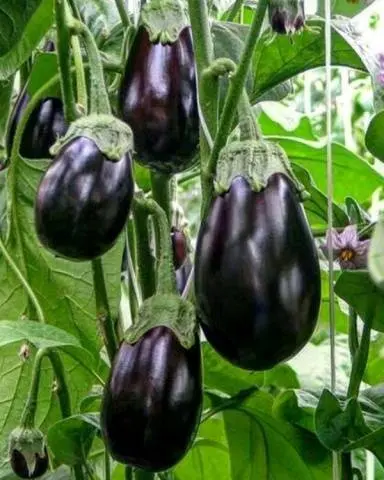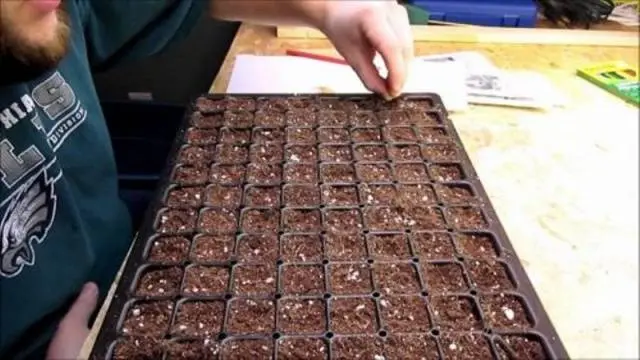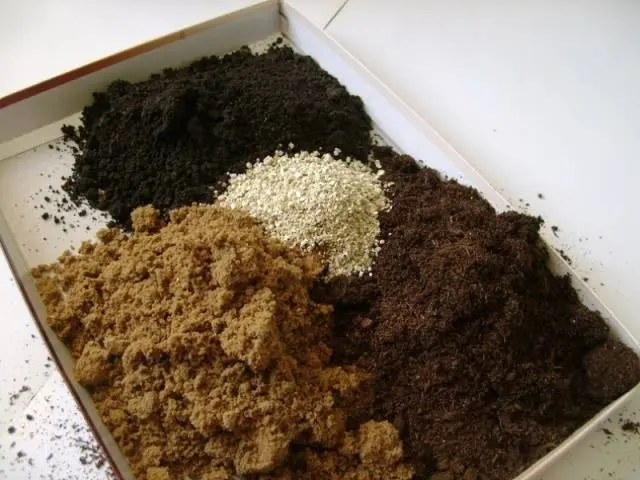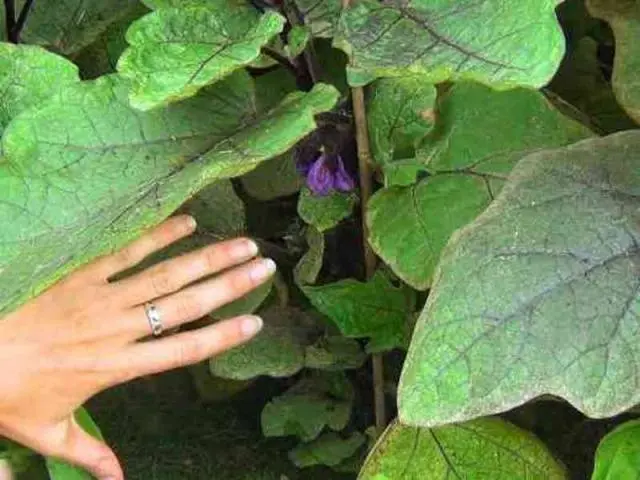Contents
Eggplant Black handsome belongs to mid-season varieties and is intended for cultivation both in open ground and in protected ground. The period from germination to the appearance of fruits depends on the growing conditions. In the open field, the harvest can be harvested after 120-140 days, and when grown in a greenhouse, the first fruits can be harvested two weeks earlier. The eggplant variety is valued for its resistance to many diseases and the ability to bear fruit under adverse weather conditions.
Black handsome. Variety characteristics
The fruits of the Black Beauty are elliptical in shape with a dark purple shiny skin, grow up to 13-15 cm in length and 11-12 cm in diameter. Eggplant pulp is creamy in color, tasty and without bitterness. The black beauty is suitable for all types of home cooking – from drying to canning.
Description of the Black Beauty can be seen in a short video:
Black handsome is considered one of the highest yielding eggplant varieties. From one sq. m with proper care, you can collect about 12 kg of fruit. Accordingly, one bush can produce more than 3 kg per season.
The plant is low, branched, the fruits begin to form in the lower part of the plant.

Cultivation and care
Variety Black handsome is grown in seedlings. Eggplant seeds can be sown from February to April. Specific sowing dates depend on further growing conditions. Eggplants are planted in the greenhouse at the end of May, and seedlings are taken out into the garden as soon as stable warm weather is established (not lower than 15 degrees).

Preparation of seedlings
Black handsome is a heat-loving variety. Before planting in open ground, eggplant seedlings must be hardened off and prepared for “moving” to a new place, in more severe conditions. 2 weeks before the expected date of planting in the room with seedlings, the temperature is gradually reduced to 17-16 degrees. You can take out a box with eggplant seedlings outside, you just need to make sure that there are no drafts.
Seedlings are fed a week before transplanting. Mineral (potassium sulfate) or organic (humate) fertilizer is diluted with water and the sprouts are watered.
After feeding, eggplant seedlings are subjected to antifungal treatment with a solution of Bordeaux liquid or boric acid, and two days before planting, the seedlings are watered abundantly.
Soil and garden preparation
While eggplant seedlings are growing, hardening and being trained, you need to take care of the garden. The optimal time for applying fertilizers to the soil coincides with the autumn harvesting of the garden. Therefore, at this stage, you need to immediately determine the place for future eggplant. Ideally, if it is a bed of onions, carrots or cucumbers. It is not recommended to plant after corn and other nightshades. It is believed that these crops deplete the soil, and the land after such plantings needs to rest.
Before digging into the place of the eggplant beds, you need to scatter fertilizer. Its composition can be as follows: for each square. m 4-5 kg of manure, 30-50 g of ammonium nitrate, 80 g of superphosphate and potassium. Separately, you need to prepare compost soil for seedlings.

Some gardeners prefer to cover the ground with a film to create a microclimate in which all fertilizers are absorbed into the soil. It is not necessary to do this at all. After digging, the fertilizer will be under a layer of soil, which will then be covered by snow.
In the spring, the ground for eggplants must be dug up again, add ash and sawdust and form a bed about 60 cm wide. This should be done two weeks before transplanting. During this time, the earth will settle and be ready to receive new “tenants”.
Transplantation and aftercare
The readiness of eggplant seedlings for transplantation is easy to determine by appearance: the stem has reached a height of 20 cm, and it has 5-6 well-developed leaves. It is impossible to overexpose seedlings – if they are not planted in time in the ground, then there simply will not be enough space for the development of the root system. In the photo – eggplant seedlings that have reached transplant maturity.

Prepared seedlings are planted at a distance of 40-50 cm from each other. The first top dressing with mineral or organic fertilizers is carried out on the 10th day. Black handsome, like other varieties of eggplant, does not tolerate drought. Excess moisture can also harm young plants. Therefore, watering should be frequent and moderate.
Processing eggplants with biological stimulants will help to achieve a good harvest. For the entire growing season, this is done only three times. The first is soaking the seeds in a solution before sowing, then during the flowering period and with the appearance of the first ovaries.
Over the entire period of growth, the bush of the Black Beauty, if not followed, can grow up to 1,5 m. The formation of a bush is a mandatory procedure when growing this variety. All leaves and shoots that are below the first fork are removed. The top of the main trunk is carefully pinched as soon as it reaches a height of 30-35 cm. The smallest buds and ovaries should also be removed – for good fruiting for one bush, no more than 10 are enough.










